|
80x5 -
240x3 -
240x4 -
320x1 -
320x2 -
320x3 -
640x1 -
640x2
Set display option above.
Click on
images to enlarge. |
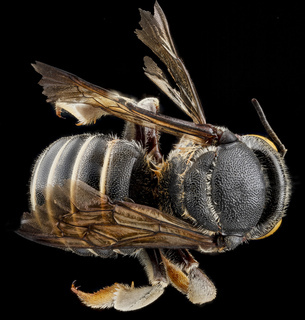
© Copyright source/photographer
· 9
Trachusa ridingsii, F, Back, Sandhills NWR, South Carolina |
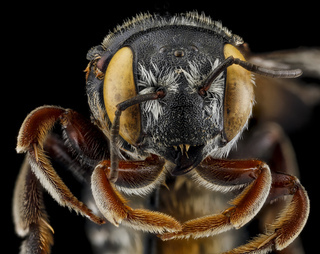
© Copyright source/photographer
· 9
Trachusa ridingsii, F, face, Sandhills NWR, South Carolina |
|
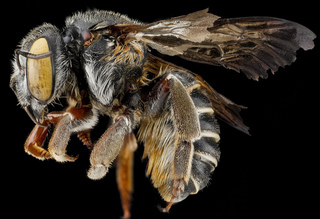
© Copyright source/photographer
· 9
Trachusa ridingsii, F, side, Sandhills NWR, South Carolina |
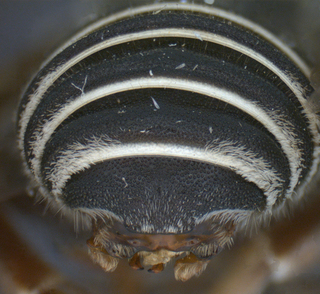
© Kimberly Huntzinger, 2007
· 1
Trachusa ridingsii, male, T6-T7, mtg |
|
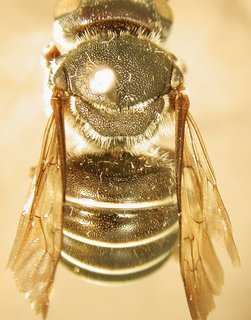
© Mary Paul
· 1
Trachusa ridingsii, male, top |
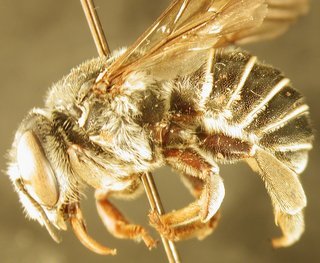
© Mary Paul
· 1
Trachusa ridingsii, male, side |
|
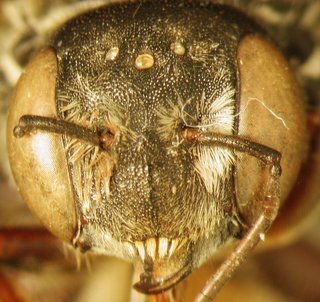
© Mary Paul
· 1
Trachusa ridingsii, female, face |
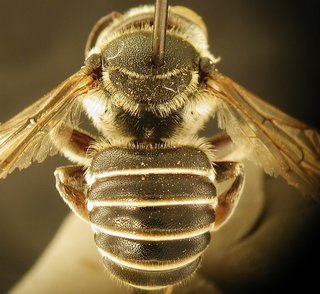
© Mary Paul
· 1
Trachusa ridingsii, female, top |
|
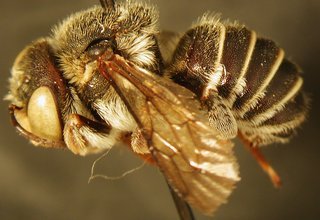
© Mary Paul
· 1
Trachusa ridingsii, female, side |
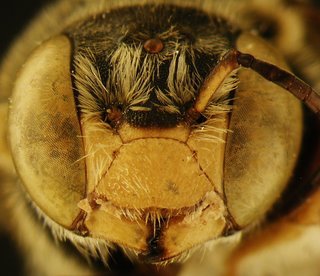
© Mary Paul
· 1
Trachusa ridingsii, male, face |
|
Overview |
Reprinted with permission from: Mitchell, T.B. 1960 Bees of the Eastern United States. North Carolina Agricultural Experiment Station Technical Bulletin No. 141.
FEMALE—Length 13 mm.; black; face considerably longer than distance between eyes above; eyes very slightly convergent below; lateral ocelli subequally distant from eyes and each other, widely removed from margin of vertex; clypeus nearly flat, apical margin nearly straight, with a very shallow, median, emarginate area and two or three minute den- tides on each side; mandibles 4-dentate, teeth quite low; cheeks slightly narrower than eyes; tegulae black, strongly narrowed anteriorly, closely and deeply punctate; wings subhyaline basally, somewhat clouded apically, veins piceous; legs piceous, tibiae with dense, appressed, silvery pubescence on outer face, spurs pale yellow; pubescence entirely pale, very short and inconspicuous on upper part of face, dorsum of thorax and abdominal terga, rather dense around antennae, on cheeks below, and on pleura and propodeum; ventral scopa entirely white; punctures quite deep and distinct, close below ocelli and on clypeus, the latter with an indefinite, narrow, median line which is less closely punctate; punctures well separated but not sparse on vertex and upper part of cheeks, becoming very close below; punctures rather coarse and slightly separated on shining scutum, becoming dense around margins, those on scutellum somewhat closer and more irregular; pleura closely punctate; abdominal terga shining, apical margins deeply and abruptly depressed, the rims narrowly ivory, discs distinctly and quite evenly punctured, punctures slightly separated but deep, distinct and rather coarse, those on tergum 6 fine and densely crowded, surface partially obscured by dense, appressed, pale tomentum.
MALE—Length 12 mm.; black, clypeus, mandibles, scape, tarsi and tibiae, in part yellow; length of face considerably greater than distance between eyes above; eyes slightly convergent below; lateral ocelli subequally distant from eyes and each other, distance to posterior margin of vertex much greater; cheeks much narrower than eyes; clypeus only slightly convex, entirely yellow, margin with a pair of minute, submedian tubercles that demark a slight emargination; mandibles 3- dentate, teeth black in contrast with the yellow outer face; restricted lateral face marks and apical margin of supraclypeal area yellow, this not extending above antennae; scape yellow anteriorly, dark posteriorly, pedicel and flagellum black; tegulae black, much narrowed anteriorly, closely, finely and deeply punctate; wings subhyaline, becoming somewhat clouded apically, veins piceous; coxae, trochanters and femora black, tibiae more ferruginous, becoming somewhat yellowish toward apex on outer surface, tarsi entirely yellow, spurs yellowish; pubescence entirely pale, rather bright ochraceous on upper part of face, vertex, and on dorsum of thorax, elsewhere more whitish or cream-colored, quite thin above, dense around tubercles, around antennae, on lower cheeks, pleura and propodeum, and quite dense on front legs posteriorly and on outer faces of mid and hind tibiae; punctures deep and distinct, quite close in general, rather fine on head, only slightly separated on vertex laterally above each eye, elsewhere very close except on maculated areas, close and rather fine on pleura, much coarser on scutum where they are slightly separated over central area of disc, becoming quite dense around the margins, close and coarse on scutellum; abdominal terga shining, deeply and distinctly punctate, punctures quite close on tergum 1, well separated on 2-5, densely crowded and fine on 6, apical margins abruptly and deeply depressed, these narrowly margined with ivory bands that are continuous across the segments; tergum 6 slightly depressed in center, apical margin opposite this depression narrowly produced and subcarinate; tergum 7 quite broad, a narrow area on each side of apical margin produced, intervening space nearly straight, surface in large part bare and shining; sterna 1-5 largely exposed, rather densely whitish pubescent, apical margin of 3 with a median tuft of very short, dense, reddish-fuscous pubescence or tomentum; terga 6-8 retracted, form as shown (fig. 8); aedagus of genital armature sclerotized apically, tips of gonostyli abruptly dilated and club-shaped.
DISTRIBUTION—North Carolina Florida and Texas, April to September.
FLOWER RECORDS—Crotalaria, Galactia, Hypericum, Melilotus and Rhus.
|
|
|
Names | |
|
|
| Supported by | |
Updated: 2024-04-19 01:54:21 gmt
|